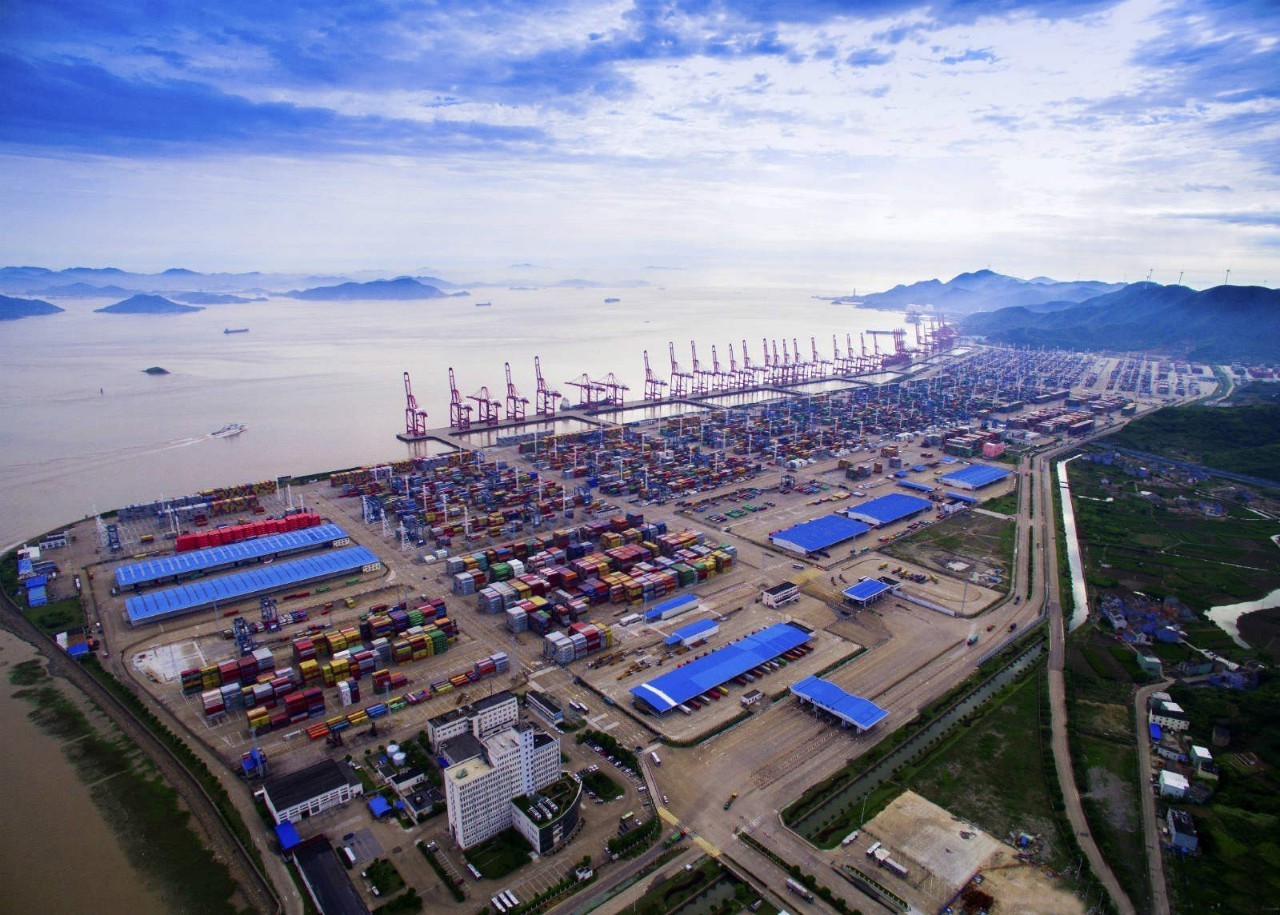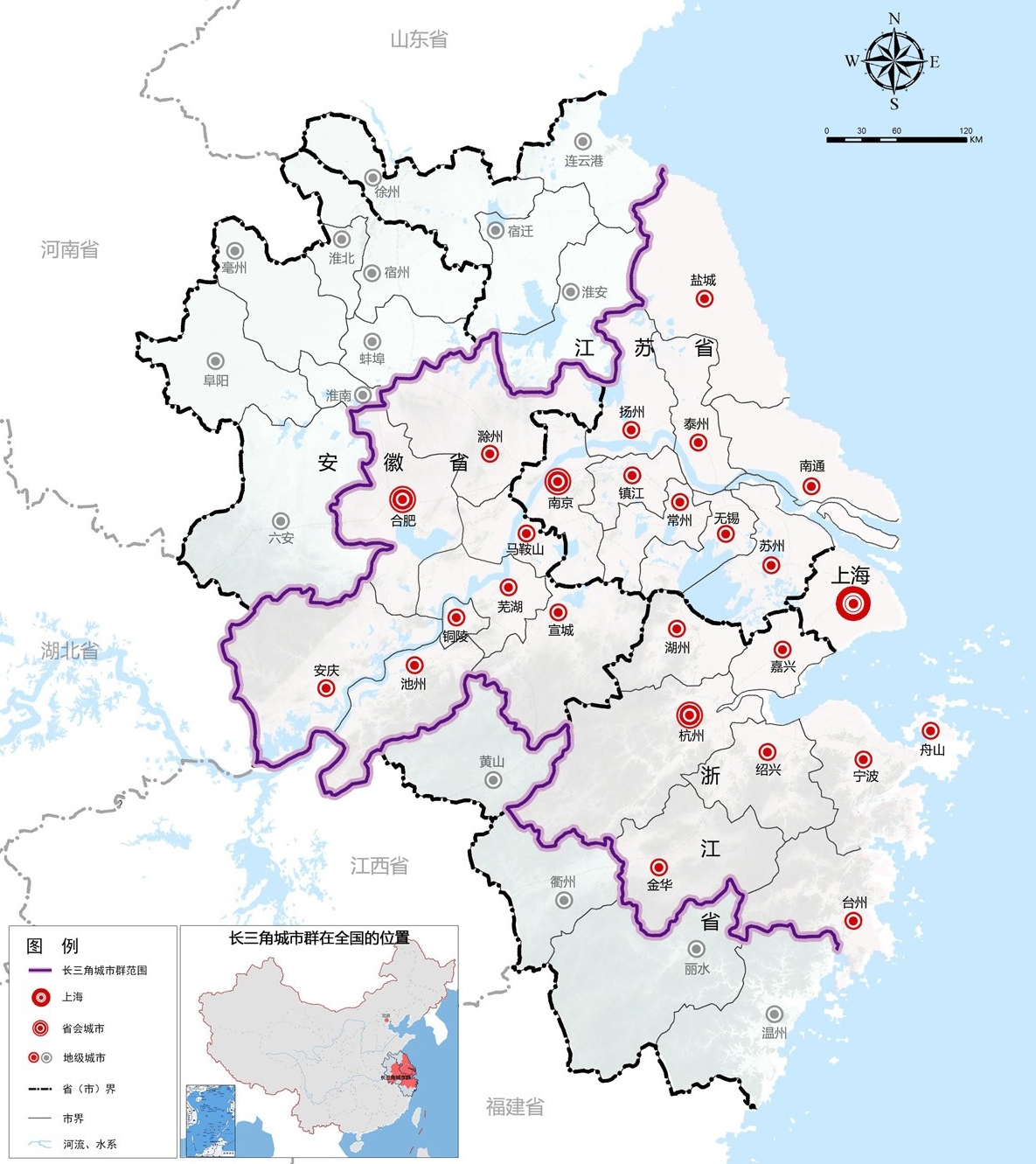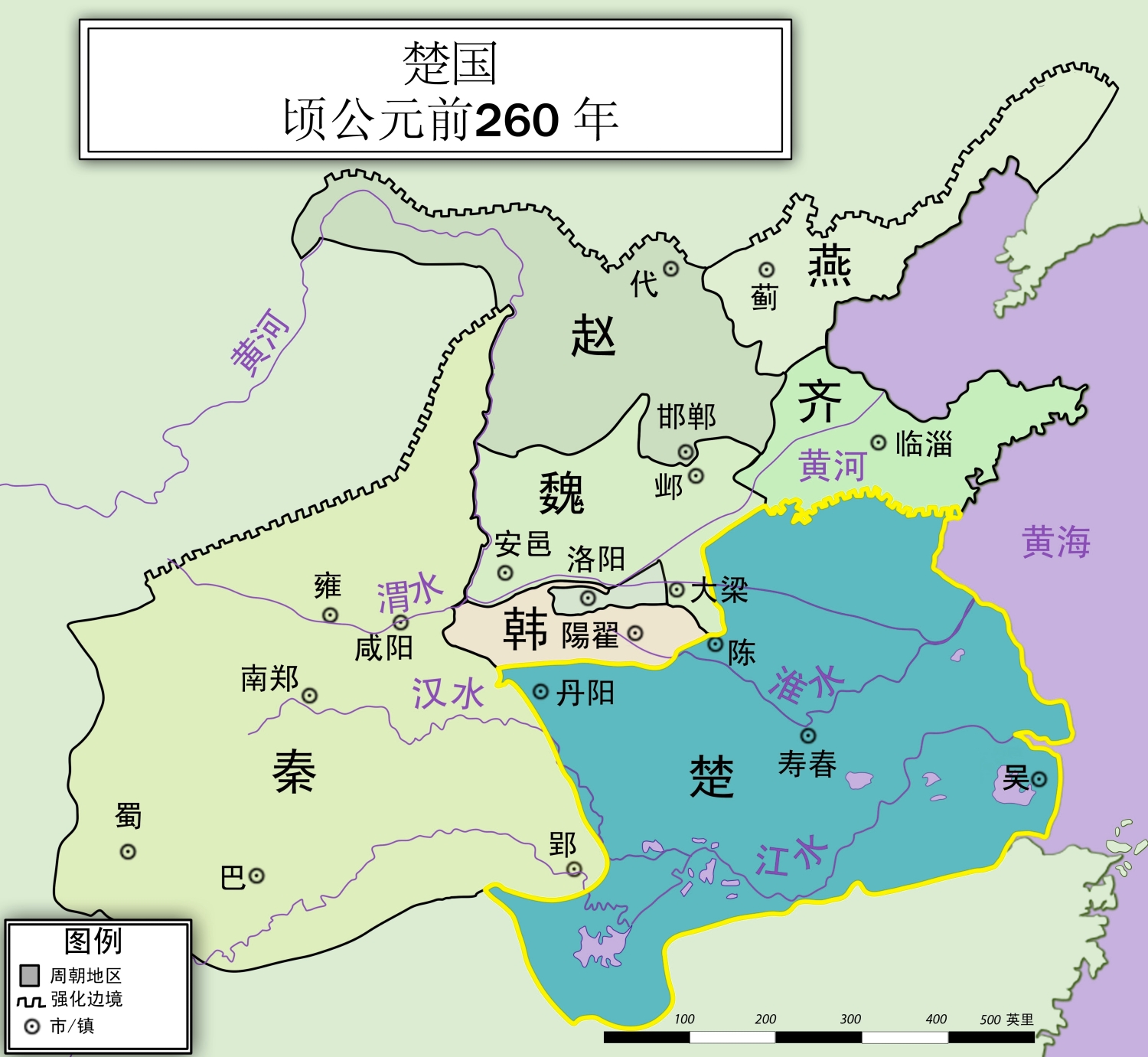
漢德百科全書 | 汉德百科全书
 Zhejiang Sheng-ZJ
Zhejiang Sheng-ZJ




 Anhui Sheng-AH
Anhui Sheng-AH
 Chongqing Shi-CQ
Chongqing Shi-CQ
 Guizhou Sheng-GZ
Guizhou Sheng-GZ

 Hand in Hand
Hand in Hand
 Hubei Sheng-HB
Hubei Sheng-HB
 Hunan Sheng-HN
Hunan Sheng-HN
 Jiangsu Sheng-JS
Jiangsu Sheng-JS
 Jiangxi Sheng-JX
Jiangxi Sheng-JX
 Shanghai Shi-SH
Shanghai Shi-SH
 Sichuan Sheng-SC
Sichuan Sheng-SC
 Yunnan Sheng-YN
Yunnan Sheng-YN
 Zhejiang Sheng-ZJ
Zhejiang Sheng-ZJ

 *Changjiang|Yangtze River
*Changjiang|Yangtze River
 *Yangtze River Delta Economic Zone
*Yangtze River Delta Economic Zone
 Anhui Sheng-AH
Anhui Sheng-AH
 China
China

 Geography
Geography

 Hand in Hand
Hand in Hand
 Jiangsu Sheng-JS
Jiangsu Sheng-JS
 Shanghai Shi-SH
Shanghai Shi-SH

 Vacation and Travel
Vacation and Travel
 Zhejiang Sheng-ZJ
Zhejiang Sheng-ZJ

长江三角洲是中国和世界著名河口三角洲之一,也是一个冲积平原。三角洲顶点在江苏仪征附近,由此向东,大致沿扬州、泰州、海安、栟茶一线,是三角洲北界;由顶点向东南,沿大茅山、天目山东麓洪积一冲积扇以迄杭州湾北岸,为其西南界和南界。介于北纬30°20′~32°30′,东经119°24′~122°30′,面积达4万平方千米。大致沿江阴、张家港、常熟、松江、金山一线,分为新三角洲和老三角洲两部分。后者位于西部,系以太湖为中心的冲积、湖积平原,距今7500~6000年前即已成陆;前者系指镇江以东,位于大江两侧的冲积平原和江中沙岛,为距今7000~6000年以来形成的三角洲平原。[1]
国务院规划的长江三角洲地区指上海市、江苏省、安徽省、浙江省全部区域,于2019年由正式编入长三角一体化规划。
Als das Jangtsekiangdelta oder Jangtse-Delta (auch Yangtzedelta, chinesisch 長江三角洲 / 长江三角洲, Pinyin Chángjiāng sānjiǎozhōu) bezeichnet man das Mündungsgebiet des Flusses Jangtsekiang in der Volksrepublik China. Es stellt einen stark verdichteten urbanen Ballungsraum und eine Megalopolis dar. Das Delta besteht aus der Stadt Schanghai, dem südlichen Teil der Provinz Jiangsu und dem nördlichen Teil der Provinz Zhejiang und je nach Definition auch aus Teilen von Anhui. Das Gebiet liegt im Herzen der Region Jiangnan (wörtlich: „südlich des Flusses“), wo der Jangtse in das Ostchinesische Meer mündet. Die städtebauliche Entwicklung in diesem Gebiet hat zu der vielleicht größten Konzentration aneinandergrenzender Großstadtgebiete in der Welt geführt. Auch landwirtschaftlich ist das Gebiet aufgrund seiner fruchtbaren Böden von hoher Bedeutung und enthält mit dem Hafen von Shanghai einen der wichtigsten Häfen der Welt. Auf einer Fläche von über 300.000 Quadratkilometern lebt hier ca. ein Zehntel der Bevölkerung von China (über 100 Millionen Einwohner) und es wird hier ca. ein Fünftel der gesamten Wirtschaftsleistung und ein Drittel der Exporte erbracht, womit die Region zu den wohlhabendsten und bedeutendsten in Ostasien gehört.
 Anhui Sheng-AH
Anhui Sheng-AH
 China
China
 Fujian Sheng-FJ
Fujian Sheng-FJ
 Guangdong Sheng-GD
Guangdong Sheng-GD
 Hebei Sheng-HE
Hebei Sheng-HE
 Jiangsu Sheng-JS
Jiangsu Sheng-JS
 Jilin Sheng-JL
Jilin Sheng-JL
 Liaoning Sheng-LN
Liaoning Sheng-LN
 Shandong Sheng-SD
Shandong Sheng-SD
 Tianjin Shi-TJ
Tianjin Shi-TJ

 Vacation and Travel
Vacation and Travel
 Zhejiang Sheng-ZJ
Zhejiang Sheng-ZJ





 Anhui Sheng-AH
Anhui Sheng-AH
 Chongqing Shi-CQ
Chongqing Shi-CQ

 History
History
 H 1000 - 500 BC
H 1000 - 500 BC

 History
History
 I 500 - 0 BC
I 500 - 0 BC
 Guizhou Sheng-GZ
Guizhou Sheng-GZ
 Henan Sheng-HA
Henan Sheng-HA
 Hubei Sheng-HB
Hubei Sheng-HB
 Hunan Sheng-HN
Hunan Sheng-HN
 Jiangsu Sheng-JS
Jiangsu Sheng-JS
 Jiangxi Sheng-JX
Jiangxi Sheng-JX
 Shandong Sheng-SD
Shandong Sheng-SD
 Shanghai Shi-SH
Shanghai Shi-SH
 Sichuan Sheng-SC
Sichuan Sheng-SC
 Zhejiang Sheng-ZJ
Zhejiang Sheng-ZJ

Chu (chinesisch 楚, Pinyin Chǔ, W.-G. Ch'u) war ein Königreich im Gebiet des heutigen Süd-China während der Westlichen Zhou-Dynastie (1046 bis 771 v. Chr.), der Zeit der Frühlings- und Herbstannalen (722 bis 481 v. Chr.) und der Zeit der Streitenden Reiche (475 bis 221 v. Chr.).
Ursprünglich war das Land als Jing (荆) und nachfolgend als Jingchu (荆楚) bekannt. Die größte Ausdehnung umfasste ein umfangreiches Gebiet, einschließlich das der heutigen Provinzen Hunan, Hubei, Chongqing, Henan, und Teile von Jiangsu. Die Hauptstadt von Chu war Ying.
Chu war zu seiner Zeit einer der mächtigsten Staaten und unterwarf zum Beispiel auch den kleineren Staat Lu im heutigen Shandong.
Größere Bedeutung erlangte Chu erstmals unter der Herrschaft von König Zhuang.
Chu (Chinese: 楚, Old Chinese: *s-r̥aʔ[2]) was a hegemonic, Zhou dynasty era state. From King Wu of Chu in the early 8th century BCE, the rulers of Chu declared themselves kings on an equal footing with the Zhou kings. Though initially inconsequential, removed to the south of the Zhou heartland and practising differing customs, Chu began a series of administrative reforms, becoming a successful expansionist state during the Spring and Autumn period. With its continued expansion Chu became a great Warring States period power, until it was overthrown by the Qin in 223 BCE.
Also known as Jing (荆) and Jingchu (荆楚), Chu included most of the present-day provinces of Hubei and Hunan, along with parts of Chongqing, Guizhou, Henan, Anhui, Jiangxi, Jiangsu, Zhejiang, and Shanghai. For more than 400 years, the Chu capital Danyang was located at the junction of the Dan and Xi Rivers[3][4] near present-day Xichuan County, Henan, but later moved to Ying. The ruling house of Chu originally bore the clan name Nai (嬭) and lineage name Yan (酓), but they are later written as Mi (芈) and Xiong (熊), respectively.[5]
Chu ou l'état de Chu (chinois simplifié : 楚国 ; chinois traditionnel : 楚國 ; pinyin : ; littéralement : « pays Chǔ ») était un État des périodes des Printemps et Automnes et des Royaumes combattants, établi sur le fleuve Yangzi. Chu a été annexé par Qin en 223 av. J.-C. La maison royale de Chu à l'origine portait le nom ancestral Nai (嬭) et le nom de clan Yan (酓) mais ceux-ci sont devenus plus tard Mi (芈) et Xiong (熊)1.
Chǔ (楚) fu un regno situato nell'attuale Cina centro meridionale, durante il Periodo delle primavere e degli autunni, (722-481 a.C. e il Periodo dei regni combattenti (481-221 a.C.). La famiglia dominante possedeva il cognome "mi" (芈), nome del clan "xiong" 熊, e il titolo nobiliare di "zi", corrispondente approssimativamente al nostro visconte.
Il primo nome dello Stato era Jing (荆) e successivamente Jingchu (荆楚). Al massimo della sua espansione il regno di Chu occupava una vasta area di territorio, comprendente le attuali province dello Hunan, Hubei, Chongqing, Henan, Shanghai, e parte dello Jiangsu. La capitale del regno era Ying (郢), localizzata approssimativamente nei pressi dell'attuale Jingzhou, nella provincia dell'Hubei.
Chǔ (楚, Wade-Giles: Ch'u3, pinyin: Chǔ) fue un reino situado en lo que hoy es China central y meridional durante el período de Primaveras y Otoños (722-481 a. C.) y el período de Reinos Combatientes (481-212 a. C.).
Fue originalmente conocido como Jing (荆) y luego como Jingchǔ (荆楚). Con el peso de su poder, el reino Chǔ ocupó vastas tierras, incluyendo las provincias actuales de Hunan, Hubei, Chongqing, Henan, Shanghái, y partes de Jiangsu. La capital de Chu era Ying (郢) y estaba ubicada en lo que hoy es la provincia de Hubei.
Чу (кит. 楚) — царство в южном Китае во время эпохи Чуньцю (722—481 гг. до н. э.) и Чжаньго («Воюющие царства» 481—221 до н. э.).
Первоначально царство было известно под названием Цзин (荆), затем Цзинчу (荆楚). На пике могущества под властью Чу находилась территория современных провинций Хунань, Хубэй, Чжэцзян, частично Цзянсу, Цзянси, Аньхой и Фуцзянь, а также города Шанхай. Ранней столицей Чу был Даньян 丹陽, в правление Сюн Туна (8-7 вв. до н. э.) столица была перенесена в Ин 郢 (совр. Цзинчжоу).

 Important port
Important port
 Music charts
Music charts
 Architecture
Architecture
 Economy and trade
Economy and trade
 Transport and traffic
Transport and traffic
 Companies
Companies
 Sport
Sport